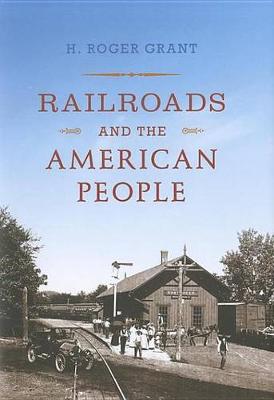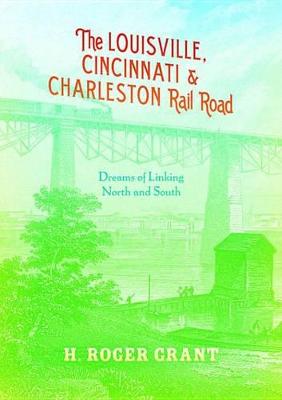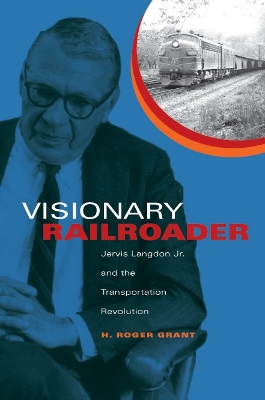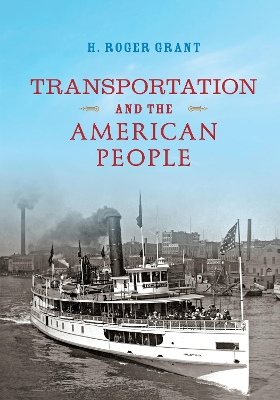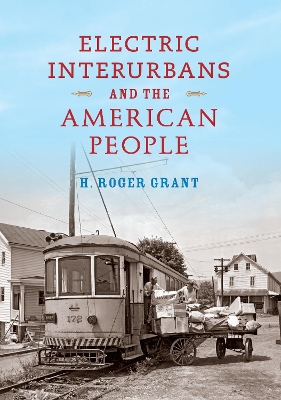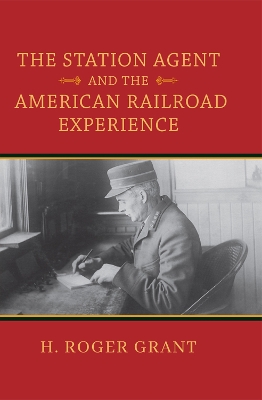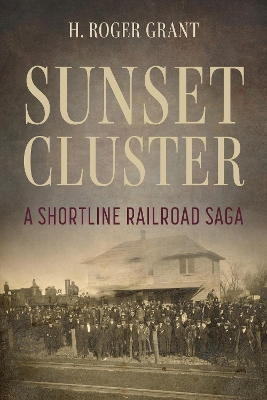Railroads Past and Present
9 total works
In this engaging social history of the impact of railroads on American life, H. Roger Grant explores the railroad's "golden age" of 1830-1930. To capture the essence of the nation's railroad experience, Grant looks at four fundamental topics-trains and travel, train stations, railroads and community life, and the legacy of railroading in America-illustrating each topic with carefully chosen period illustrations. Grant recalls the lasting memories left by train travel, both of luxurious Pullman cars and the grit and grind of coal-powered locals. He discusses the important role railroads played for towns and cities across America, not only for the access they provided to distant places and distant markets but also for the depots that were a focus of community life. Finally, Grant reviews the lasting heritage of the railroads preserved in word, stone, paint, and memory. Railroads and the American People is a sparkling paean to American railroading by one of its finest historians.
Among the grand antebellum plans to build railroads to interconnect the vast American republic, perhaps none was more ambitious than the Louisville, Cincinnati & Charleston. The route was intended to link the cotton-producing South and the grain and livestock growers of the Old Northwest with traders and markets in the East, creating economic opportunities along its 700-mile length. But then came the Panic of 1837, and the project came to a halt. H. Roger Grant tells the incredible story of this singular example of "railroad fever" and the remarkable visionaries whose hopes for connecting North and South would require more than half a century—and one Civil War—to reach fruition.
Visionary Railroader chronicles the life of a key figure in the history of rail travel in the United States. As president of the Baltimore & Ohio Railroad, Jervis Langdon Jr. had the opportunity to put progressive concepts into practice.
In 1964, Langdon took charge of the Rock Island, and by the time he left in 1970, he had spearheaded major improvements for this struggling carrier. The same year, he became lead trustee for the bankrupt Penn Central and three years later assumed the presidency. From his role in passing the Regional Rail Reorganization Act of 1973 to his work on creating the quasi-public Conrail, Visionary Railroader examines the impact of Langdon's active life with clear text, unique representations of media of the day, and select family photos.
In John W. Barriger III: Railroad Legend, historian H. Roger Grant details the fascinating life and impact of a transportation tycoon and "doctor of sick railroads."
After graduating from the Massachusetts Institute of Technology, John W. Barriger III (1899–1976) started his career on the Pennsylvania Railroad as a rodman, shop hand, and then assistant yardmaster. His enthusiasm, tenacity, and lifelong passion for the industry propelled him professionally, culminating in leadership roles at Monon Railroad, Pittsburgh and Lake Erie Railroad, Missouri-Kansas-Texas Railroad and the Boston and Maine Railroad. His legendary capability to save railroad corporations in peril earned him the nickname "doctor of sick railroads," and his impact was also felt far from the train tracks, as he successfully guided New Deal relief efforts for the Railroad Division of the Reconstruction Finance Corporation during the Depression and served in the Office of Defense Transportation during World War II. Featuring numerous personal photographs and interviews, John W. Barriger III is an intimate account of a railroad magnate and his role in transforming the transportation industry.
Transportation is the unsung hero in America's story. Stagecoaches, waterways, canals, railways, busses, and airplanes revolutionized much more than just the way people got around; they transformed the economic, political, and social aspects of everyday life. In Transportation and the American People, renowned historian H. Roger Grant tells the story of American transportation from its slow, uncomfortable, and often dangerous beginnings to the speed and comfort of travel today. Early advances like stagecoaches and canals allowed traders, business, and industry to expand across the nation, setting the stage for modern developments like transcontinental railways and busses that would forever reshape the continent. Grant provides a compelling and thoroughly researched narrative of the social history of travel, shining a light on the role of transportation in shaping the country and on the people who helped build it.
One of the most intriguing yet neglected pieces of American transportation history, electric interurban railroads were designed to assist shoppers, salesmen, farmers, commuters, and pleasure-seekers alike with short distance travel. At a time when most roads were unpaved and horse and buggy travel were costly and difficult, these streetcar-like electric cars were essential to economic growth. But why did interurban fever strike so suddenly and extensively in the Midwest and other areas? Why did thousands of people withdraw their savings to get onto what they believed to be a "gravy train?" How did officials of competing steam railroads respond to these challenges to their operations? H. Roger Grant explores the rise and fall of this fleeting form of transportation that started in the early 1900s and was defunct just 30 years later. Perfect for railfans, Electric Interurbans and the American People is a comprehensive contribution for those who love the flanged wheel.
Before the widespread popularity of automobiles, buses, and trucks, freight and passenger trains bound the nation together. The Station Agent and the American Railroad Experience explores the role of local frontline workers that kept the country's vast rail network running.
Virtually every community with a railroad connection had a depot and an agent. These men and occasionally women became the official representatives of their companies and were highly respected. They met the public when they sold tickets, planned travel itineraries, and reported freight and express shipments. Additionally, their first-hand knowledge of Morse code made them the most informed in town. But as times changed, so did the role of, and the need for, the station agent.
Beautifully illustrated with dozens of vintage photographs, The Station Agent and the American Railroad Experience, brings back to life the day-to-day experience of the station agent and captures the evolution of railroad operations as technology advanced.
Discover the Sunset Cluster—railroads that were doomed to fail?
The first two decades of the 20th century were the twilight of the railroad age. Major routes had long been established, and local service became the focus of new construction. Beginning in 1907, a cluster of five shortline railroads were established in otherwise unconnected parts of Iowa. By the dawn of the Great Depression, all these routes would be discontinued.
The five Iowa 'sunset cluster' railroads might appear to deserve eternal obscurity, being at best minor footnotes to American railroad history. After all, their total mileage barely exceeded 100 miles. Their average life span, moreover, covered about five years, and the Des Moines & Red Oak Railway (DM&RO) never turned a wheel. Yet, to understand the rise of the railroad empires of the 19th century, it is necessary to study their fall.
Using contemporary newspapers, government reports, and other little-known sources, renowned railway historian H. Roger Grant offers a fascinating look at these shortline railroads. Sunset Cluster explores the almost desperate desire by communities to benefit from steel rails before the regional railroad map finally imploded and the challenges faced by latter-day shortline builders.
